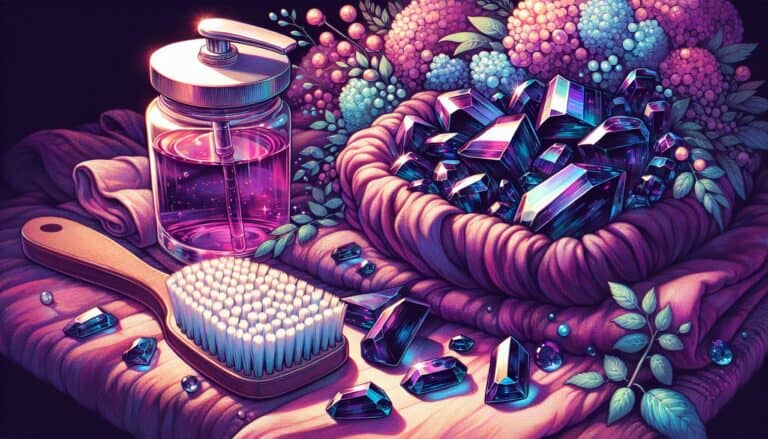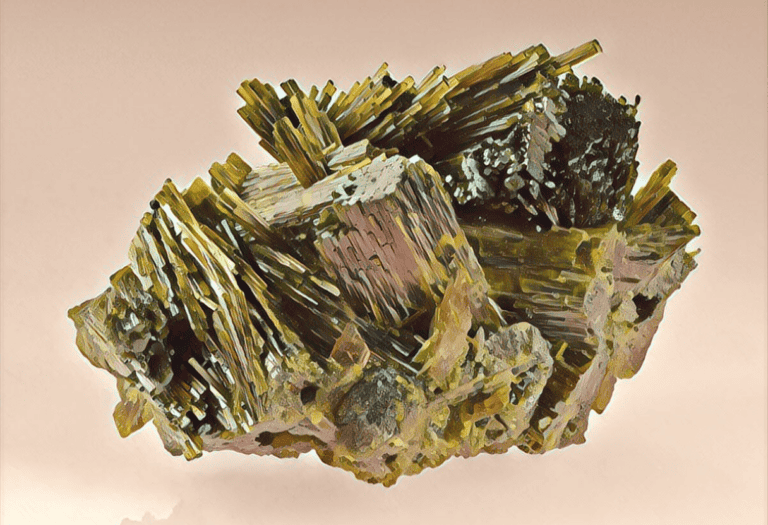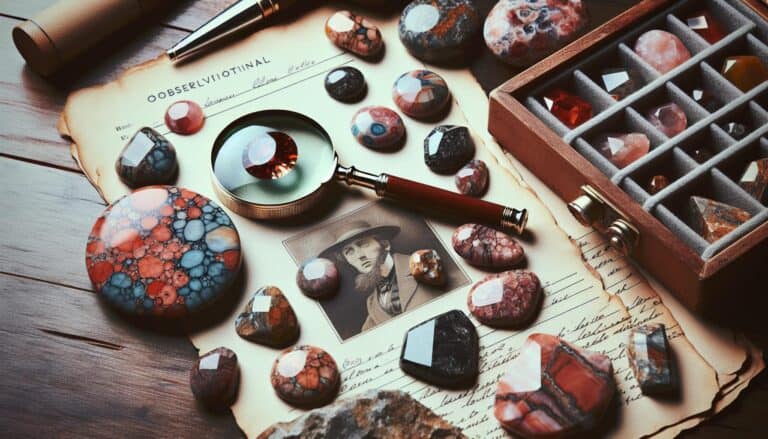Ever wondered what gives sapphires their value?
It’s not just their breathtaking blues that draw you in; there’s a whole world behind their worth. From royal engagement rings to high-end watches, sapphires have long been a symbol of luxury and class.
Determining a sapphire’s value can be quite the conundrum. It’s not just about size or color; factors like clarity, cut, and origin all play pivotal roles. Whether you’re looking to buy or just appreciate these gems, understanding their worth is key.
But don’t worry, you’re about to dive into the sparkling depths of sapphire valuation.
You’ll discover what makes these stones so prized and how their worth is calculated, so you can navigate the gem market with confidence.
Sapphire value is determined by color, clarity, cut quality, and origin. The most prized are deep blue sapphires from Kashmir, Myanmar, and Sri Lanka. Larger, eye-clean stones are rarer and more valuable. Natural, untreated sapphires fetch higher prices. Market demand and rarity of color variations also influence value.
What Is Sapphire?
Before you can dive into understanding the worth of a sapphire, it’s crucial you comprehend what sapphires are and where they come from. A sapphire is a precious gemstone, a variety of the mineral corundum, consisting of aluminum oxide with trace amounts of elements such as iron, titanium, chromium, copper, or magnesium. These trace elements can lead to the wide array of colors sapphires are known for, ranging from the iconic royal blue to pinks, yellows, and even greens.
Sapphires are renowned for their exceptional hardness, ranking 9 on the Mohs scale, just below diamonds, making them a superb choice for jewelry that withstands the test of time. Aside from their beauty and durability, sapphires possess significant cultural and historical importance, often associated with nobility and fidelity, which adds to their allure and perceived value.
When it comes to their origins, sapphires are mined in various parts of the world, with each location contributing to the gem’s characteristics and value. For instance, the Kashmir region was historically known for producing sapphires with a velvety blue hue highly prized in the market. Today, significant sapphire deposits are found in countries like Sri Lanka, Madagascar, and Australia, and each source has a reputation for yielding sapphires with distinct qualities.
In the market, you’ll encounter terms such as ‘natural sapphire’ and ‘treated sapphire.’ Natural sapphires are those that have not been treated in any way to enhance their color or clarity, whereas treated sapphires have undergone processes to improve their appearance. It’s important to note that the treatment of sapphires is a common and accepted practice, but it does affect the gem’s price and desirability among collectors and jewel connoisseurs.
Understanding these nuances is key to appreciating the depth of what a sapphire is beyond just its captivating appearance. Sapphires are more than just stones; they’re a legacy wrapped in deep blue mystique, coveted for centuries.
Sapphire Prices: Factors That Affect Value

Color, Clarity, and Cut Quality
When evaluating sapphire prices, the three C’s—color, clarity, and cut quality—play pivotal roles. Color is the most significant factor, with pure, vivid blue sapphires fetching the highest prices. However, pink, yellow, and green sapphires can also be quite valuable, depending on their saturation and tone.
The clarity of a sapphire refers to the presence of internal flaws or inclusions. Stones boasting high clarity are rarer and therefore more expensive. While some inclusions affect a sapphire’s value negatively, others, like rutile silk inclusions, can enhance the stone’s beauty and make it more desirable.
Lastly, the cut quality can greatly impact a sapphire’s brilliance and overall appearance. A well-cut sapphire will reflect light evenly across its surface, maximizing luster and minimizing dark spots or ‘windows’ in the stone. Superior craftsmanship in the cutting process ensures the stone’s angles amplify its inherent beauty, pushing its worth up.
Market Demand and Availability
The value of sapphires is also deeply influenced by Market Demand and Availability. Like any other commodity, sapphires are subject to the fluctuations of the market. Stones that are in vogue may see a price increase as demand outstrips supply.
High-quality blue sapphires from renowned locations like Kashmir, Myanmar, and Sri Lanka are always in demand due to their exquisite color and rarity. Therefore, they command a premium. Conversely, stones that are more abundant and easily sourced like Australian sapphires, might not be as costly, reflecting their greater availability.
Additionally, market trends can shift quickly, sometimes favoring unconventional sapphire colors. Awareness of these trends can empower you to make savvy investment choices.
Remember, each sapphire is unique, and its value should be assessed on an individual basis, taking into account these critical factors to determine its true worth.
Understanding Sapphire: A Rare Gem

The Rarity of Sapphire
When you’re considering the worth of sapphires, rarity is a critical factor. These gems aren’t as ubiquitous as you might think. While diamonds are found in many regions worldwide, top-quality sapphires are much less common. Kashmir, for example, is known for yielding some of the rarest sapphires, exhibiting an intense, velvety blue color. However, these mines are nearly depleted, making their sapphires exceedingly rare and valuable.
It’s not just the blue sapphires that are rare. Other hues like padparadscha, a blend of pink and orange, are incredibly scarce. Each sapphire hue comes with its own level of scarcity, directly influencing its value. Market demand can surge for particular colors, pushing the prices for those specific stones even higher.
Origins and Characteristics
Sapphires hail from various locations across the globe. Each source has its unique signature that affects the gem’s quality and price. Besides the Kashmir region, Myanmar (formerly Burma) and Sri Lanka are prominent sources of high-quality sapphires. Their origins play a critical role in their valuation. A sapphire from these locations can command a considerable premium over stones from lesser-known sources.
But it’s not just location that sets sapphire value. The physical and chemical composition of sapphires gives them remarkable characteristics. They belong to the corundum family, second only to diamonds in hardness. The presence of trace elements like iron and titanium bestows that sought-after blue color in the stones. In contrast, traces of chromium can result in pink sapphires. Each sapphire is a testament to its unique geological formation, with its individual size, shape, and hue that make it a treasure of nature.
When evaluating sapphires, factor in:
- Geography: Where it was mined can hint at its quality.
- Color Palette: The spectrum ranges beyond blue, with every shade adding to its uniqueness.
- Trace Elements: These dictate the gem’s color and contribute to its overall beauty.
Understanding the rarity and origins of sapphires broadens your appreciation for these gems, lending insight into their true worth beyond the basic metrics of color, clarity, and cut quality. Whether for investment or adornment, recognizing the nuances of sapphire’s rarity and origin will guide you to make informed decisions about the value and desirability of these exquisite gemstones.
Sapphire Grading and Valuation
When you’re in the market for sapphires, understanding their grading system lets you gauge their quality and value with precision. Unlike diamonds, which adhere to the universally recognized “Four Cs” (Cut, Color, Clarity, and Carat weight), sapphire grading is less standardized. Still, several key factors are crucial in evaluating these gemstones.
The Grading System for Sapphire
The value of a sapphire is significantly influenced by its color, clarity, cut, and carat weight, but the grading system is more nuanced for these colored gemstones.
- Color: The most important factor, with pure, vivid hues commanding the highest prices. Look for sapphires that exhibit a strong, saturated color without being too dark or too light.
- Clarity: While inclusions are more accepted in sapphires than diamonds, stones with minimal visible inclusions are more prized.
- Cut: The cut should maximize the stone’s luster and minimize color zoning. An excellent cut can also make the color appear more intense.
- Carat Weight: Larger sapphires are rarer and thus more valuable, especially if they maintain high color quality and clarity.
In addition to the Four Cs, the market also looks at a sapphire’s origin, with stones from Kashmir, Sri Lanka, and Myanmar often fetching higher prices due to their historical significance and perceived quality.
Certification and Appraisal
To ascertain the quality of a sapphire, you’ll need to rely on certification from reputable gemological laboratories. A thorough gemstone report includes an analysis of the Four Cs and notes on any treatments that have been applied to enhance color or clarity.
- Lab Reports: Reputable institutions like the GIA (Gemological Institute of America) and AGTA (American Gem Trade Association) offer reports certifying sapphires’ authenticity and quality.
- Treatments: Be aware that most sapphires undergo heat treatment to improve color and clarity. Untreated stones, however, are rare and command a premium.
- Appraisal: For insurance or resale purposes, a professional appraisal provides an estimate of a sapphire’s market value, considering its quality, certification, and current market trends.
Remember, while certificates and appraisals are essential tools, your personal preference should also guide your selection. It’s the unique beauty of the sapphire that often seals the deal, regardless of what the documents say.
Current Market Trends in Sapphire Pricing
Understanding the current market trends is crucial when you’re looking to invest in sapphires. The gemstone market can be volatile, with prices fluctuating due to various factors such as fashion trends, economic conditions, and the discovery of new mines.
Recent years have seen a steady increase in the price of high-quality sapphires, with the market showing a particular interest in stones that have a rich, deep blue hue. These pieces are considered highly desirable and often command top dollar at auction. Conversely, sapphires with less desirable colors or clarity levels tend to fetch lower prices.
The source of the sapphire also plays a significant role in its market value. Stones from coveted locations like Kashmir, Myanmar (formerly Burma), and Sri Lanka (formerly Ceylon) traditionally sell for more due to their renowned quality and color. New mining operations in places like Madagascar may offer more affordable prices but can vary in quality.
The demand for untreated, natural sapphires has surged, significantly impacting their price. Consumers are becoming more educated and are seeking stones that haven’t been heat-treated to enhance their color or clarity. Here’s a quick look at how prices compare:
| Treatment Type | Price Range |
|---|---|
| Untreated | Premium pricing |
| Heat-treated | Generally more affordable |
| Other treatments | Varied, often less valuable |
Additionally, celebrity influence cannot be discounted. When high-profile individuals don sapphire-engagement rings or other jewelry, it can trigger a spike in interest and prices.
To stay ahead, keep an eye on auction results from reputable houses like Sotheby’s or Christie’s. These can be a barometer for sapphire pricing trends and help you gauge how much you might expect to pay or earn from a sale.
And remember, while there’s a wealth of information available, nothing beats having a thorough understanding of your personal tastes and how they fit within the current market. After all, whether you’re buying for love, investment, or both, your satisfaction with the stone should always come first.
The Most Expensive Sapphire
When you’re delving into sapphires, it’s natural to wonder about the zenith of their value. The Most Expensive Sapphire in the world, the Blue Belle of Asia, tipped the scales at an astonishing sale price during its last auction. This 392.52-carat Ceylon sapphire fetched over $17 million at a Christie’s auction in 2014, setting a record for the highest amount ever paid for a sapphire.
Such staggering prices are driven by a combination of rarity, size, and provenance. The Blue Belle’s origin from Sri Lanka, historically known for producing some of the highest quality sapphires, greatly contributed to its value. Moreover, its exceptional size and clarity mark it as one of a kind, gleaming with the deep, vibrant blue that is highly sought after. High-caliber sapphires like this are often auctioned at prestigious events, which only amplifies their worth.
| Fact | Detail |
|---|---|
| Gemstone | Blue Belle of Asia |
| Carat Weight | 392.52 |
| Sale Price (2014) | $17 million+ |
| Origin | Ceylon (Sri Lanka) |
| Auction House | Christie’s |
While not all sapphires can command such sky-high prices, the benchmark set by gems like the Blue Belle of Asia gives you an idea of the market’s ceiling. Notable mentions also include the “Star of Adam,” one of the largest blue star sapphires, which weighs an incredible 1,404 carats and is valued at over $300 million.
When pursuing your sapphire, remember that while these grandiose gems are rare, the market does offer exquisite pieces at various price points. Conditions such as inclusions, treatments, and color saturation all play crucial roles in determining a sapphire’s worth, ensuring there’s a gem out there that not only meets your aesthetic preferences but also your budget. As you consider your options, bear in mind the unique characteristics that make each stone distinct, from its geographic origin to the nuances of its hue.
Buying Sapphire: Tips and Recommendations
Where to Purchase High-Quality Sapphire
When you’re in the market for high-quality sapphire, selecting the right vendor is crucial. Trustworthy sources such as reputable jewelers, recognized online platforms, and specialty gemstone stores are your best bet. High-end jewelry retailers often have a collection of certified gems, and their in-house experts can guide you through your purchase.
Visiting gem shows and auctions may also lead you to exceptional sapphire pieces. These events often house gems with verified origins and high caliber. For those who prefer digital convenience, reputable online gemstone marketplaces provide detailed information, high-resolution images, and certificates of authenticity. Do your due diligence; look for reviews and testimonials about the seller before making a commitment.
- Ensure the seller offers a return policy
- Ask for a gemstone certificate from a recognized laboratory
- Check if the price is consistent with the current market value
By sticking to these criteria, you’re more likely to find sapphires that are worth your investment.
Ensuring Authenticity and Value
To ensure you’re getting what you pay for, always demand a certification for your sapphire. Certifications from laboratories like the GIA, AGL, or IGI assess the gemstone’s quality and authenticity. The report should provide detailed information on the sapphire’s carat weight, cut, clarity, and color, as well as any treatments it has undergone.
Understanding the treatments that sapphires may go through is vital. Common treatments like heating can improve a stone’s color and clarity but should be disclosed as they affect the gem’s value. Untreated natural sapphires often fetch a higher price because of their rarity.
- Seek gems with a “no heat” treatment label for higher value
- Know the common treatments and how they impact pricing
- Consult an independent gemologist if in doubt
In the context of value, pay close attention to the origin of the sapphire. Stones from Kashmir, Burma, or Sri Lanka are particularly prized. Remember, factors like color saturation, symmetry, and the presence of inclusions will also influence the worth of the stone. Desirable sapphires display a deep, even color with minimal inclusions.
When it comes to pricing, here’s a simple breakdown:
| Carat Size | Price Range |
|---|---|
| Under 1 | $25 to $1,000+ |
| 1 to 3 | $600 to $2,000+ |
| Over 3 | $1,500 to $3,500+ per carat |
Conclusion: Buying & Selling Sapphire
Your quest to determine the worth of a sapphire is now armed with the essential knowledge to make an informed decision.
Remember, the true value lies not just in the carat size but in the overall quality and authenticity of the stone. By selecting from reputable sources and insisting on certified gems, you’re ensuring that your investment reflects the genuine splendor of a sapphire. Whether it’s the deep blue of a Kashmir sapphire or the unique appeal of a stone with no heat treatment, the right sapphire is out there waiting for you.
Trust your instincts, do your homework, and you’ll find a gem that’s not only beautiful but also a wise addition to your collection.


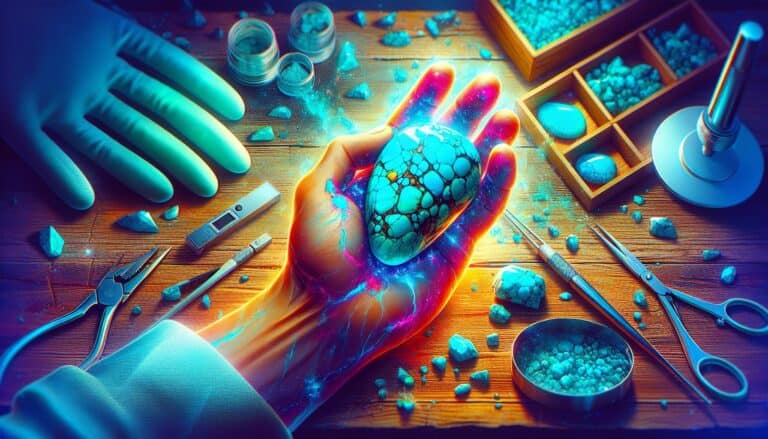
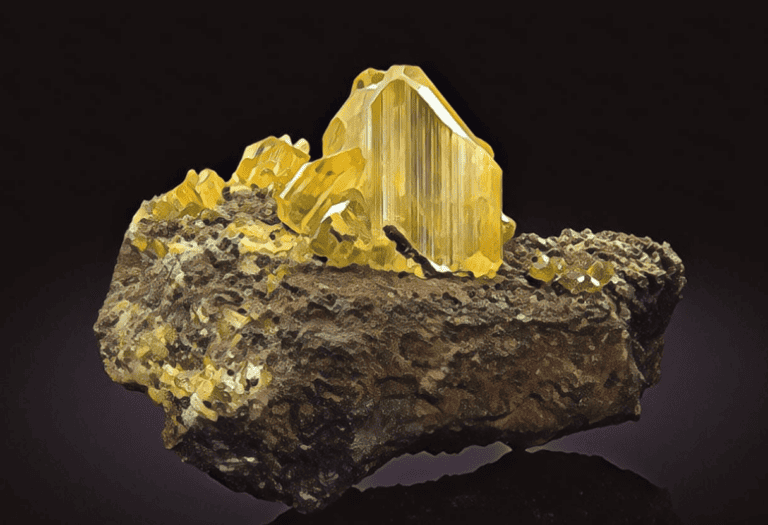
![Ohio Rockhounding Sites in [year]: Spots & Treasures](https://observationhobbies.com/wp-content/uploads/2024/01/vqJV6LfGkDrfpCSMU6rRr-768x439.jpg)
